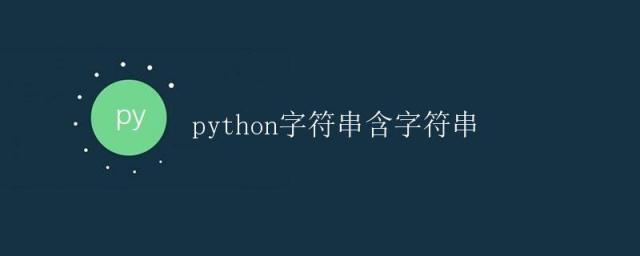Python字符串含字符串
2024年07月07日 Python字符串含字符串 极客笔记
Python字符串含字符串

在Python中,我们常常会遇到需要判断一个字符串是否包含另一个字符串的情况。Python提供了多种方法来实现这一功能,本文将详细介绍这些方法,并给出相应的示例代码和运行结果。
使用in关键字
Python中最简单的方法是使用in关键字来判断一个字符串是否包含另一个字符串。当被检查的字符串包含给定的子字符串时,in关键字会返回True,否则返回False。
# 示例代码
string1 = "Hello, world!"
string2 = "world"
if string2 in string1:
print("string1 contains string2")
else:
print("string1 does not contain string2")
运行结果:
string1 contains string2
使用find方法
除了in关键字外,我们还可以使用字符串对象的find()方法来判断一个字符串是否包含另一个字符串。find()方法会返回被查找字符串的第一个出现位置的索引,如果未找到则返回-1。通过判断find()方法的返回值是否大于等于0来确定是否包含。
# 示例代码
string1 = "Hello, world!"
string2 = "world"
if string1.find(string2) >= 0:
print("string1 contains string2")
else:
print("string1 does not contain string2")
运行结果:
string1 contains string2
使用index方法
与find()方法类似,字符串对象还提供了index()方法用于查找子字符串在原字符串中的位置。不同之处在于,当子字符串不存在时,index()方法会触发ValueError异常,因此在使用index()方法时需要注意异常处理。
# 示例代码
string1 = "Hello, world!"
string2 = "world"
try:
index = string1.index(string2)
print("string1 contains string2")
except ValueError:
print("string1 does not contain string2")
运行结果:
string1 contains string2
使用count方法
除了判断一个字符串是否包含另一个字符串,有时我们还需要知道一个字符串中包含某个子字符串的个数。这时可以使用count()方法来统计子字符串在原字符串中出现的次数。
# 示例代码
string1 = "Hello, world! Hello, Python!"
string2 = "Hello"
count = string1.count(string2)
print(f"The string1 contains {count} times of string2")
运行结果:
The string1 contains 2 times of string2
使用正则表达式
在复杂的字符串匹配场景中,我们可以使用正则表达式来实现更灵活的匹配。Python内置的re模块提供了对正则表达式的支持,可以使用re.search()方法来查找字符串中是否包含符合正则表达式模式的子字符串。
import re
# 示例代码
string1 = "Hello, world! Hello, Python!"
pattern = r"Hello"
if re.search(pattern, string1):
print("string1 contains 'Hello'")
else:
print("string1 does not contain 'Hello'")
运行结果:
string1 contains 'Hello'
总结
本文介绍了在Python中判断一个字符串是否包含另一个字符串的多种方法,包括使用in关键字、find方法、index方法、count方法和正则表达式。不同的方法适用于不同的场景,可根据具体需求选择合适的方法进行字符串匹配。通过学习本文内容,相信读者已经掌握了Python中字符串包含字符串的相关技巧。
本文链接:http://so.lmcjl.com/news/8031/